Air France Flight 447
description: 2009 Air France flight crash into Atlantic Ocean, no survivors
20 results
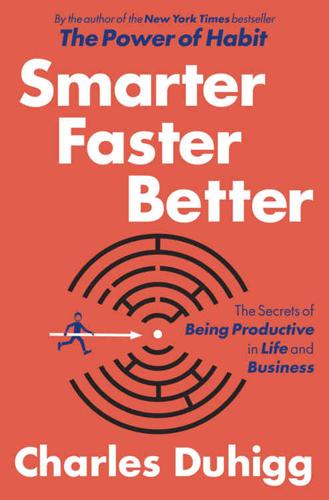
Smarter Faster Better: The Secrets of Being Productive in Life and Business
by
Charles Duhigg
Published 8 Mar 2016
I also drew heavily on a number of publications: William Langewiesche, “The Human Factor,” Vanity Fair, October 2014; Nicola Clark, “Report Cites Cockpit Confusion in Air France Crash,” The New York Times, July 6, 2012; Nicola Clark, “Experts Say Pilots Need More Air Crisis Training,” The New York Times, November 21, 2011; Kim Willsher, “Transcripts Detail the Final Moments of Flight from Rio,” Los Angeles Times, October 16, 2011; Nick Ross and Neil Tweedie, “Air France Flight 447: ‘Damn It, We’re Going to Crash,’ ” The Daily Telegraph, May 1, 2012; “Air France Flight 447: When All Else Fails, You Still Have to Fly the Airplane,” Aviation Safety, March 1, 2011; “Concerns over Recovering AF447 Recorders,” Aviation Week, June 3, 2009; Flight Crew Operating Manual, Airbus 330—Systems—Maintenance System; Tim Vasquez, “Air France Flight 447: A Detailed Meteorological Analysis,” Weather Graphics, June 3, 2009, http://www.weathergraphics.com/tim/af447/; Cooperative Institute for Meteorological Satellite Studies, “Air France Flight #447: Did Weather Play a Role in the Accident?”
…
Classification: LCC BF431 .D8185 2016 | DDC 158—dc23 LC record available at https://lccn.loc.gov/2015034214 eBook ISBN 9780679645429 Illustrations by Anton Ioukhnovets randomhousebooks.com Book design by Liz Cosgrove, adapted for eBook Cover design and illustration: Anton Ioukhnovets v4.1 a CONTENTS Cover Title Page Copyright INTRODUCTION 1. MOTIVATION Reimagining Boot Camp, Nursing Home Rebellions, and the Locus of Control 2. TEAMS Psychological Safety at Google and Saturday Night Live 3. FOCUS Cognitive Tunneling, Air France Flight 447, and the Power of Mental Models 4. GOAL SETTING Smart Goals, Stretch Goals, and the Yom Kippur War 5. MANAGING OTHERS Solving a Kidnapping with Lean and Agile Thinking and a Culture of Trust 6. DECISION MAKING Forecasting the Future (and Winning at Poker) with Bayesian Psychology 7.
…
” * * * *1 Project Oxygen found that a good manager (1) is a good coach; (2) empowers and does not micromanage; (3) expresses interest and concern in subordinates’ success and well-being; (4) is results oriented; (5) listens and shares information; (6) helps with career development; (7) has a clear vision and strategy; (8) has key technical skills. *2 The correct answers for these photos can be found in the notes on this page. FOCUS Cognitive Tunneling, Air France Flight 447, and the Power of Mental Models When they finally found the wreckage, it was clear that few of the victims had realized disaster was near even as it struck. There was no evidence of passengers’ last-minute buckling of seatbelts or frenzied raising of food trays. Oxygen masks were firmly encased in ceiling panels.

Reinventing Capitalism in the Age of Big Data
by
Viktor Mayer-Schönberger
and
Thomas Ramge
Published 27 Feb 2018
It has access to all the capital but lacks the insight, based on information, to circumnavigate the perilous weather. – 8 – FEEDBACK EFFECTS THE AIRBUS 330 ROSE MAJESTICALLY INTO THE EVENING air on June 1, 2009, as it lifted off from Rio de Janeiro’s international airport. The 216 passengers on board Air France Flight 447 looked forward to an uneventful journey to Paris. Commercial passenger flights have achieved an amazing safety record, thanks in no small part to powerful computers and well-trained cockpit crews. Together they form an elaborate feedback system. The flight computers process huge volumes of data from dozens of sensors, keeping the plane on track (itself a feedback loop) and flying safely, while the pilots monitor the computers, examining rich data presented to them about the plane’s position, trajectory, and health.
…
It laid the groundwork for technical developments from the guidance systems of intercontinental nuclear missiles (and the Apollo moon lander) all the way to modern adaptive machine learning systems. But Wiener also looked at and worried about catastrophic failures of feedback systems that could, as the story of Air France Flight 447 highlights, be triggered by unexpected situations, or if elements of a feedback system were caught in an erroneous loop. Wiener’s concept of control in systems has also fostered the desire for control: if something can be controlled, it ought to be, and often in a centralized fashion. The mathematician had anticipated this in choosing to name the study of systems control “cybernetics.”
…
Even if the companies supplying us with such decision-assistance systems are perfectly benign, a single point of failure embedded in the structure of data-rich markets would make them (and us) uniquely susceptible to outside attacks. It’s as though everyone were driving only one kind of car: What do we do when we discover that someone has tampered with the brake system? In the context of Air France Flight 447, all flight computers in modern Airbus airplanes exhibited the same behavior, and thus after the terrible accident, all pilots flying Airbus aircraft had to be trained to understand correctly what the stall warning was telling them and when. Homogeneity of the systems we employ amplifies their flaws and can lead to a systemic vulnerability.
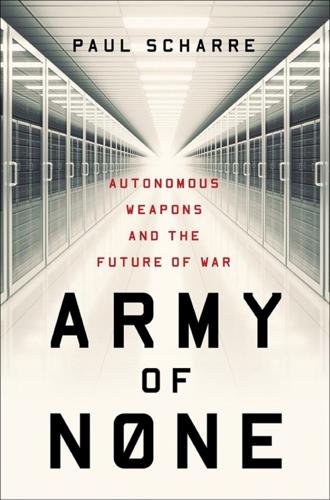
Army of None: Autonomous Weapons and the Future of War
by
Paul Scharre
Published 23 Apr 2018
Newman, “Learning from a Learning Thermostat: Lessons for Intelligent Systems for the Home,” UbiComp’13, September 8–12, 2013. 158 “As systems get increasingly complex”: John Borrie, interview, April 12, 2016. 159 Air France Flight 447: “Final Report: On the accidents of 1st June 2009 to the Airbus A330-203 registered F-GZCP operated by Air France flight 447 Rio de Janeiro—Paris,” Bureau d’Enquêtes et d’Analyses pour la sécurité de l’aviation civile, [English translation], 2012, http://www.bea.aero/docspa/2009/f-cp090601.en/pdf/f-cp090601.en.pdf. William Langewiesche, “The Human Factor,” Vanity Fair, October 2014, http://www.vanityfair.com/news/business/2014/10/air-france-flight-447-crash. Nick Ross and Neil Tweedie, “Air France Flight 447: ‘Damn it, We’re Going to Crash,’” The Telegraph, April 28, 2012, http://www.telegraph.co.uk/technology/9231855/Air-France-Flight-447-Damn-it-were-going-to-crash.html. 159 Normal accident theory sheds light: In fact, Army researchers specifically cited the Three Mile Island incident as having much in common with the Patriot fratricides.
…
Borrie said, “As systems get increasingly complex and increasingly self-directed, I think it’s going to get more and more difficult for human beings to be able to think ahead of time what those weak points are necessarily going to be.” When this happens in high-risk situations, the result can be catastrophic. “WE DON’T UNDERSTAND ANYTHING!” On June 1, 2009, Air France Flight 447 from Rio to Paris ran into trouble midway over the Atlantic Ocean. The incident began with a minor and insignificant instrumentation failure. Air speed probes on the wings froze due to ice crystals, a rare but non-serious problem that did not affect the flight of the aircraft. Because the airspeed indicators were no longer functioning properly, the autopilot disengaged and handed over control back to the pilots.
…
The complexity of the aircraft created problems of transparency that would likely not have existed on a simpler aircraft. By the time the senior pilot understood what was happening, it was too late. The plane was too low and descending too rapidly to recover. The plane crashed into the ocean, killing all 228 people on board. Unlike in the F-22 International Date Line incident or the automobile hack, the Air France Flight 447 crash was not due to a hidden vulnerability lurking within the software. In fact, the automation performed perfectly. However, it would be overly simplistic to lay the crash at the feet of human error. Certainly the pilots made mistakes, but the problem is best characterized as human-automation failure.
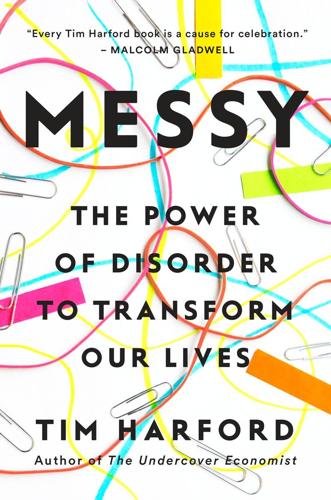
Messy: The Power of Disorder to Transform Our Lives
by
Tim Harford
Published 3 Oct 2016
Jeff Wise, “What Really Happened Aboard Air France 447,” Popular Mechanics, December 6, 2011, http://www.popularmechanics.com/flight/a3115/what-really-happened-aboard-air-france-447-6611877/; William Langewiesche, “The Human Factor,” Vanity Fair, October 2014, http://www.vanityfair.com/news/business/2014/10/air-france-flight-447-crash; “Air France Flight 447 and the Safety Paradox of Automated Cockpits,” Slate, June 25, 2015; “Children of the Magenta,” 99% Invisible (podcast), June 23, 2015, http://99percentinvisible.org/episode/children-of-the-magenta-automation-paradox-pt-1/. 2. William Langewiesche, speaking on “Children of the Magenta,” 99% Invisible (podcast), http://99percentinvisible.org/episode/children-of-the-magenta-automation-paradox-pt-1/. 3.
…
We tried everything!” Two of those statements were wrong. The crew were in control of the airplane. One simple course of action could have ended the crisis they were facing, and they had not tried it. But David Robert was certainly right on one count: he didn’t understand what was happening. Air France Flight 447 had begun straightforwardly enough—an on-time takeoff from Rio de Janeiro at 7:29 p.m. on May 31, 2009, bound for Paris. Hindsight suggests the three pilots had their vulnerabilities. Pierre-Cédric Bonin, thirty-two, was young and inexperienced. David Robert, thirty-seven, had more experience, but he had recently become an Air France manager and no longer flew full-time.
…
The link provided will take you to the beginning of that print page. You may need to scroll forward from that location to find the corresponding reference on your e-reader. Abrahamson, Eric, 236 Academy of Management Journal, 157 Adderley, Cannonball, 96 African Americans, 226 Aiden, Erez Lieberman, 23–26, 28, 97n Air France Flight 447, 177–86, 195, 197, 199 AirAsia Flight 8501, 183n Aldrich, Howard, 53 Algorithms, 10–12, 32, 55, 141, 167n, 254 dating, 243–51 Eno and, 15, 19–29, 48 failures of, 190–95 Allergan, 141 Alomar, Carlos, 9, 19, 20, 31–32 Alsup, William, 190 “Am I Wasting Time Organizing Email?”

Mapmatics: How We Navigate the World Through Numbers
by
Paulina Rowinska
Published 5 Jun 2024
multiple countries and organizations: Kirk Semple, ‘Search for Malaysian Jet to Be Costliest in History’, New York Times, 9 April 2014, sec. A. receiving the information about the crash: Lawrence D. Stone, ‘In Search of Air France Flight 447’, OR/MS Today 38, no. 4 (2011), Institute for Operations Research and Management Science, https://www.informs.org/ORMS-Today/Public-Articles/August-Volume-38-Number-4/In-Search-of-Air-France-Flight-447. which describes motion in water: Stone, ‘In Search of Air France Flight 447’. determining the causes of the crash: Lawrence D. Stone et al., ‘Search for the Wreckage of Air France Flight AF 447’, Statistical Science 29, no. 1 (February 2014): 69–80, https://doi.org/10.1214/13-sts420.
…
One of them – conceptually similar to geographic profiling but instead based on a centuries-old theorem – has proven particularly successful. While Bayesian search, as it is called, sounds rather obscure and mathematical, I suspect that not only have you heard about this method in the news but that you’re using it yourself on an everyday basis. When Air France Flight 447 from Rio de Janeiro to Paris sent its last GPS position just after 2 a.m. UTC on 1 June 2009, it became the last known position before it tragically disappeared into the ocean, taking with it 228 passengers and crew members. For the next two years, the whole world followed attempts to recover the wreckage, which would help to explain what had happened and give the mourning families much-needed closure.
…
to alter the map accurately: Divya Agarwal, ‘How SLAM Works for Self-Driving Cars: A Brief but Detailed Overview’, AutoVision News, 5 June 2020, https://www.autovision-news.com/adas/how-slam-works/. Index References in bold are to figures and tables. Aarhus, Denmark ref1 abstraction ref1 actuaries ref1n Adler, Hanna ref1 Afonso V of Portugal ref1 Air France Flight 447 ref1, ref2 airplane flight paths ref1, ref2, ref3 airplane wrecks, finding ref1, ref2 Alaska, USA ref1, ref2, ref3 Alexandria, Egypt ref1, ref2, ref3 algorithm ref1 Amsterdam, Netherlands ref1, ref2 ‘An Application of Geography to Mathematics’ (Rickey and Tuchinsky) ref1, ref2 analysis ref1n angles alternate interior ref1n azimuthal projections ref1, ref2, ref3, ref4 retroazimuthal projections ref1, ref2 sines ref1n Snell’s Law ref1, ref2 solstices and Earth’s circumference ref1, ref2 on spheres ref1, ref2 tangents ref1, ref2n triangulation ref1, ref2, ref3, ref4, ref5 trigonometry ref1, ref2, ref3, ref4, ref5n animated movies ref1, ref2 ant colonies ref1 Apian, Peter ref1 Appel, Kenneth ref1 arc minutes ref1n Aristotle ref1 astronomical observations ref1, ref2, ref3 autonomous cars ref1 azimuthal projections ref1, ref2, ref3, ref4, ref5, ref6, ref7 azimuths ref1, ref2, ref3, ref4 Baltimore phenomenon ref1 Barbara Petchenik Children’s World Map Drawing Competition ref1 Bartholdi III, John J. ref1 Bayes’ theorem ref1 Bayes, Thomas ref1 Bayesian search ref1, ref2 BBC ref1, ref2 Beck, Henry ref1, ref2, ref3 Behrmann, Walter ref1 Bell Labs, New Jersey, USA ref1, ref2, ref3 Berann, Heinrich ref1 Bergen-op-Zoom, Netherlands ref1 Bessel, Friedrich Wilhelm ref1 biomimetics ref1 Blostein, Dorothea ref1, ref2 Boeing Company ref1 Bolivar, Simón ref1 Bond, Henry ref1 Bonin, Pierre-Cédric ref1 Boston Gazette ref1 Boston Public Schools (BPS), Massachusetts, USA ref1, ref2 Brantingham, Patricia and Paul ref1 Broad Street, London, UK ref1, ref2 Brown, Oliver ref1 Brown vs Board of Education (USA) ref1 Budd, William ref1 Bureau d’Enquêtes et d’Analyses (BEA), France ref1 Büttner, J.

Our Robots, Ourselves: Robotics and the Myths of Autonomy
by
David A. Mindell
Published 12 Oct 2015
Even though the aircraft was flying straight and level when the computers tripped off, the pilots struggled to make sense of the bad air data. One man pulled back, the other pushed forward on his control stick. They continued straight and level for about a minute, then lost control. On June 1, 2009, Air France flight 447 spiraled into the ocean, killing more than two hundred passengers and crew. It disappeared below the waves, nearly without a trace. In the global, interconnected system of international aviation, it is unacceptable for an airliner to simply disappear. A massive, coordinated search followed.
…
In the 1930s, Pan American World Airways (Pan Am) began to replace the terms “pilot” and “copilot” with “captain” and “first officer,” and gave them the now-familiar maritime-inspired uniforms to suggest confidence and authority based on established social roles. More recently, these terms morphed into “pilot flying” and “pilot not flying,” because the captain might not always be the person flying (or, as on Air France flight 447, the captain may not even be in the room). Now, the Federal Aviation Administration (FAA) has recommended these terms be changed to “pilot flying” and “pilot monitoring” to give positive designation to their actions, showing both pilots are engaged in flying the plane regardless of which has a hand on the controls.
…
Abbott, Kathy, 75–76 ABE (autonomous benthic explorer), 54, 191–96 acoustic communications and, 195–96 geological mapping by, 192–93, 194 loss of, 191–92 nature of autonomy of, 194–97 original mission of, 192 acoustic communications, and AUVs, 195–96 acoustic transponder networks, for navigation, 29 Afghanistan, 139 Airbus, 86–87 A-310, 82 Flight QF32, 71–72, 77 aircraft/aviation, 69–111, 226–29 adding unmanned automation technology to, 215–18 Automated Labor In-cockpit System (ALIAS), 217–18 drones (See drones) FAA survey of technology and pilot skill, 2013, 75–76 future of, 110–11 heads-up display (HUD) and, 88–108, 225 history of, 77–84 landings and, 84–88 optionally piloted aircraft (OPAs), 213–15 pilots role in flying modern aircraft, 69–72, 75–77 synthetic vision and, 108–9, 225 technological change and increasing automation, effect of, 72–75 unmanned helicopters, 210–13 Air France Flight 447, 1–2, 1–4, 69–70, 72, 73, 81, 162, 196 Akers, Thomas, 170, 171–72 Alaska Airlines, 92 Alvin (deep-sea submersible), 26–30, 33–34, 35, 45–51, 57, 59–66, 176, 194, 197, 225 ABE’s geological mapping and, 192–93, 194 acoustic navigation system of, 29 arguments and justifications for new, 63–65 hydrogen bomb recovery effort using, 27 Jason, differences between and rivalry with, 59–62 plate tectonics evidence gathered by, 28–29 Titanic wreck and, 45–51 Amber, 126 amphoras, 23–24 AMUVS (Advanced Maneuverable Underwater Vehicle System), 43–44 ANGUS (Acoustically Navigated Geologic Underwater Survey System), 30–34 Apollo missions, 225 Apollo 11, 159–61 Apollo 13, 72 Apollo 15, 178 Apollo 17, 177, 179 field geology and, 176–79 Argo (tethered sled), 35–36, 41–43 Armstrong, Neil, 77, 78, 159–61, 221 Asiana Airlines, 106–7 Flight 214, 72, 106 Association for Unmanned Vehicle Systems International (AUVSI), 219 Atlantis II (research vessel), 45 Aurora Flight Sciences, 211, 214, 217 Automated Labor In-cockpit System (ALIAS), 217–18 automatic landing systems (autoland) Apollo landings and, 159–61 in commercial aviation, 86–88, 94, 97 space shuttles and, 161–63 automation, 4–6, 10, 11 automation bias, 74 automation dependency, 74 automation surprise, 74 automobiles, driverless.
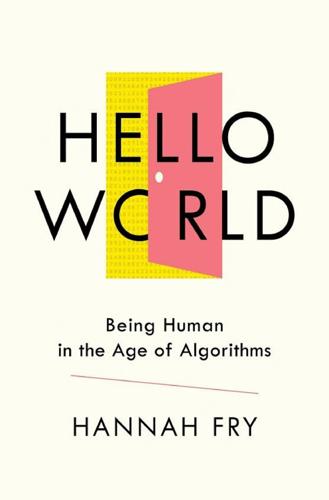
Hello World: Being Human in the Age of Algorithms
by
Hannah Fry
Published 17 Sep 2018
The company baby Among the pilots at Air France, Pierre-Cédric Bonin was known as a ‘company baby’.40 He had joined the airline at the tender age of 26, with only a few hundred hours of flying time under his belt, and had grown up in the airline’s fleet of Airbuses. By the time he stepped aboard the fated flight of AF447, aged 32, he had managed to clock up a respectable 2,936 hours in the air, although that still made him by far the least experienced of the three pilots on board.41 None the less, it was Bonin who sat at the controls of Air France flight 447 on 31 May 2009, as took it off from the tarmac of Rio de Janeiro–Galeão International Airport and headed home to Paris.42 This was an Airbus A330, one of the most sophisticated commercial aircraft ever built. Its autopilot system was so advanced that it was practically capable of completing an entire flight unaided, apart from take-off and landing.
…
But there’s a hidden danger in building an automated system that can safely handle virtually every issue its designers can anticipate. If a pilot is only expected to take over in exceptional circumstances, they’ll no longer maintain the skills they need to operate the system themselves. So they’ll have very little experience to draw on to meet the challenge of an unanticipated emergency. And that’s what happened with Air France flight 447. Although Bonin had accumulated thousands of hours in an Airbus cockpit, his actual experience of flying an A330 by hand was minimal. His role as a pilot had mostly been to monitor the automatic system. It meant that when the autopilot disengaged during that evening’s flight, Bonin didn’t know how to fly the plane safely.43 The trouble started when ice crystals began to form inside the air-speed sensors built into the fuselage.
…
It’s a fact that has also been borne out in experiments with driverless car simulations. One study, which let people read a book or play on their phones while the car drove itself, found that it took up to 40 seconds after an alarm sounded for them to regain proper control of the vehicle.59 That’s exactly what happened with Air France flight 447. Captain Dubois, who should have been easily capable of saving the plane, took around one minute too long to realize what was happening and come up with the simple solution that would have solved the problem.60 Ironically, the better self-driving technology gets, the worse these problems become.

Prediction Machines: The Simple Economics of Artificial Intelligence
by
Ajay Agrawal
,
Joshua Gans
and
Avi Goldfarb
Published 16 Apr 2018
Humans Also Need Experience The scarcity of experience becomes even more salient when you consider the experience of your human resources. If the machines get the experience, then the humans might not. Recently, some expressed concern that automation could result in the deskilling of humans. Air France Flight 447 crashed into the Atlantic on route from Rio de Janeiro to Paris in 2009. The crisis began with bad weather, but escalated when the plane’s autopilot disengaged. At the helm during that time, unlike Sully in the US Airways plane, a relatively inexperienced pilot poorly handled the situation, according to reports.
…
Li (eds), Theory and Applications of Models of Computation. TAMC 2008. Lecture Notes in Computer Science, vol 4978 (Berlin: Springer, 2008), https://doi.org/10.1007/978-3-540-79228-4_1. 14. William Langewiesche, “The Human Factor,” Vanity Fair, October 2014, http://www.vanityfair.com/news/business/2014/10/air-france-flight-447-crash. 15. Tim Harford, “How Computers Are Setting Us Up for Disaster,” The Guardian, October 11, 2016, https://www.theguardian.com/technology/2016/oct/11/crash-how-computers-are-setting-us-up-disaster. Chapter 18 1. L. Sweeney, “Discrimination in Online Ad Delivery,” Communications of the ACM 56, no. 5 (2013): 44–54, https://dataprivacylab.org/projects/onlineads/. 2.
…
Index accounts payable, 123–124, 162 action, in decision making, 74–76 Ada Support 90–91, 174 Adobe, 190 adoption, timing of, 17 adversarial machine learning, 187–188 advertising, 174–176 biases in, 195–198 effectiveness of, 198–199 gender discrimination and, 196–198 quality of, 198–199 AI. See artificial intelligence (AI) AI canvas, 134–139 AI-first strategy, 179–182 AI Insight, 14 AI moment, 7–8 AI neuroscience, 197–198 Air France Flight 447, 192 airline industry, 168–169, 170 airline pilots, 184–185, 192 airplanes, performance of, 182–183 airport lounges, 105–106 AI winter, 32 Alabama, hybrid corn adoption in, 158–160, 181 Alexa, 1, 2–3 Alibaba, 217, 218 Alipay, 219 AliveCor, 44 Allied bombing raids, WWII, 100–102 AlphaGo, 8, 187, 222 Amazon, 215 AI asset acquisition by, 217 Alexa, 1, 2–3 anticipatory shipping strategy, 16–17, 156–157 Echo, 220 fulfillment at, 105, 143, 144–145 Machine Learning, 203 Picking Challenge, 144 privacy policy, 190 The Americans (TV show), 103 analogies, 99 anticipatory shipping, 16–17, 156–157 Apple, 189–190, 217 Apple Watch, 44–45, 46, 48–49 application ranking, 127–129 artificial intelligence (AI), 31–32.See also tools, AI automation vs., 112 biases in, 195–198 cost reductions in, 7–20 diversity in machines for, 201–202 economics of, 8–9 general, or strong, 133, 221–223 limitations of, 133 machine learning as, 38–40 as magical, 8–9 superintelligent, 221–223 trade-offs with, 4 when to deploy, 184–187 arts, 117 Asimov, Isaac, 115 Atomwise, 134–138 AT&T, 215 autocorrect, 130 automatic teller machines (ATMs), 171–173 automation AI vs., 112 fulfillment and, 105, 143–145 job loss and, 210–212 job redesign and, 141–151 legal requirements for humans with, 115–117 in mining, 112–114 when not to use, 117–118 when to use, 114–117 work flow analysis and, 123–131, 142–145 automobile industry, 169–170, 171.

Air Crashes and Miracle Landings: 60 Narratives
by
Christopher Bartlett
Published 11 Apr 2010
The AF447 Airbus A330 crash has now alerted airlines and their pilots to the danger of startled pilots being at a loss, and worst still, doing the wrong thing, on suddenly finding they must fly the aircraft manually when blissfully cruising at high altitude under autopilot. In the AF447 case, the pilots did not understand what was happening. The captain had gone for his rest ostensibly leaving the less experienced of the two copilots in charge. [Air France Flight 447] At around 10:30 p.m. local time on August 31, 2009, Air France Flight 447 took off from Rio de Janeiro at almost its maximum takeoff weight. On board the twin-engine Airbus A330 were 216 passengers, and 12 crewmembers. The aircrew consisted of the captain and two first officers. The extra pilot was to allow them to take turns in having a rest over the long flight to Paris lasting some 11 hours.
…
In 2012, the NTSB said the A300 should have greater in-built protection against use of the rudder in such an excessive fashion, which suggests that they no longer think another pilot doing likewise is inconceivable. COLGAN AIR (On Approach to Buffalo Niagara International 2009) 50% of Flights in US by Regional Carriers Readers might well ask why the A330 crash of Air France Flight 447 into the South Atlantic is in the next (‘Fly-by-Wire’) chapter and the Colgan crash is in this one, when in both cases the inappropriate reaction of the pilot(s) to stall warnings was apparently the cause. This is simply because the ‘Fly-by-Wire’ chapter specifically covers aircraft such as the Airbus A330 with sophisticated computer control systems, and until the remarkable recovery of the flight recorders from the depths of the South Atlantic, many assumed these systems were themselves responsible for the disaster.
…
$ $250,000 fine on Air Transat 16 1 1,200°F (650°C) 155 1,831st 727 228 100-ft fly-past height 193 12-year-old Schoolgirl Symbolizes Disaster 118 3 3,000°F (1,600°C) 155 31L 174 38-day grounding of the fleet 114 7 707 228 727 tri-jet 228 A A ‘Just’ Culture—the Nimrod Report 328 A Human Error Approach to Aviation Accident Analysis xiii, 324 A300 132, 175, 305, 309 A320 187, 195, 265 AAIB 50, 53 Abate, Captain Leul 13 ABC News Nightline 299 Accidentology 339 ADIRU 198 ADS-B 71 Advanced Aircraft Maneuvering Program (AAMP) 180 Aeroflot Flight 593 284 Affair of State 191 Air Accident Investigations 322 Air Canada Flight 143 35 Air Canada Flight 797 134 Air Crash Investigation xii Air France 67, 92, 161, 187, 309 Air France Flight 358 67 Air France Flight 447 201 Air France Flight 4590 161 Air France Flight 8969 309 air freshener 171 Air Inter Flight 148 265 Air Liberté 92 Air Liberté and Air Van Freighter 92 Air New Zealand Flight 901 256 Air Transat Flight 236 15 Air Van 92 airboats 254 Airbus xviii, 19, 67, 90, 131, 187, 195 Airbus A330 15 Airbus Industries 191 Airliners Morph into Flying Bombs xx All Die when Home and Dry 135 All Nippon Airways YS-11 248 alligators 152 Aloha Airlines Flight 243 231 Alpha floor 188, 286 aluminum shower xv American Airlines Flight 11 313 American Airlines Flight 191 111 American Airlines flight 587 174 American Airlines Flight 77 313 American Airlines Flight 96 101 APU 14, 24, 143, 240, 311 arresting chains 17 ash from volcano 11 Asseline, Captain Michel 188 ATC clearance 81 ATSB xiii, 60, 198 Atsugi airbase 246 Aubury, Martin 237 Austin, Matt 236 author vi Automation Blunts Pilots’ Flying Skills 338 Autopilot Takes Unconscious Pilots up and Onwards 289 autopilots automatically disengage 254 Avianca Flight 52 41 Avoid ‘comfort blankets’ of complexity, compliance and consensus 328 avoid areas of stress concentration 120 B Bangkok Post 55 barometric altimeter 268 Bartelski, Jan xii, 78, 85, 171 Bashkirian Airlines Flight 2937 & DHL Flight 611 72 Bath University 56 Batouty, Gamil El 172 BEA 107, 162 Before Start checklist 292 Bennett, Alan 279 Bilbao 197 BOAC 107 BOAC Comet 1 G-ALYV 223 BOAC Comet 1 G-ALYZ 223 BOAC Flight 911 245 Boeing 35, 38, 41, 52, 59, 64, 77, 89, 122, 231, 242 Boeing 707 41, 42, 225, 271 Boeing 737 xvii, 92, 151, 173, 231, 289, 294 Boeing 747 50, 56, 59, 64, 69, 70, 77, 78, 86, 90, 104, 115, 120, 238, 241, 242, 295, 297 Boeing 767 35, 38, 172, 314 Boeing 777 18, 52 Boeing Redesigns Engine Mounts 242 Bombay (Mumbai) 195 BOW 40 Breeze Blows Flames onto Aircraft 139 British Airtours 139 British Airtours Flight 28M 139 British Airways Flight 38 52 British Airways Flight 9 9 British European Airways 107 British Midlands Airways 141 Brown, Captain Roy 277 Busby, Michael 138 C C5A 90 Cabin Floor Reinforced for Piano 101 Cactus 1549 19 Canadian Pacific Airlines Flight 402 245 Canadian Pacific Airways delivery flight 223 Canadian Transport Safety Bureau 159 captaincy 193 Carmody, Carol J. 179 Challenger Launch Decision 327 Chalmers, Robert 5 Change of Configuration 112 Charles de Gaulle Airport 92, 162 Checklists and Flight Manual 332 Chernobyl xiv, 157, 325 Chicken and the Egg 326 China Airlines Boeing 747-2R7F (Freighter) 242 CHIRP 323 chronic smokers 121 civilian use of GPS 297 Classic Case Cited in Pilot Training 141 classic CFIT disaster 253 C-latches 103 clean configuration 174 cliff optical illusion 17 cockpit video recording (amateur) 288 Cockpit Video Recordings 339 cold fusion 140 Cold War 301 Colgan Air Flight 3407 181 Collins, Captain 170 Comair 91 Comair Flight 191 186 Comets 223 Command Responsibility 193, 256 Commercial Aviation Safety xii commuter airlines 181 Comoros Islands 13 compressor stalls 12 Concorde 161 Confidential Reporting 323 confidentiality policy 237 conspiracy theory 150 Controlled Flight into Terrain (CFIT) xix corrosion-assisted fatigue 229 Cost Benefit/Your Life = $2,700,000?
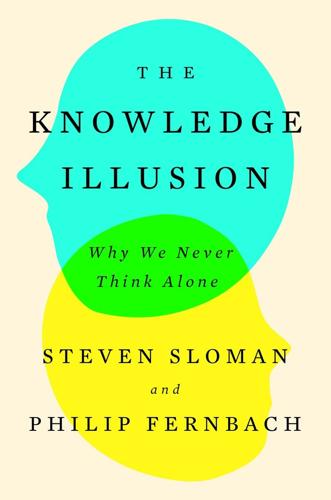
The Knowledge Illusion
by
Steven Sloman
Published 10 Feb 2017
A good way to recover from a stall is to point the nose of the plane down and increase engine power until the plane’s airspeed generates sufficient lift to keep the plane aloft. Stall recovery is one of most basic skills that prospective pilots master in flight school. This is why investigators were shocked when they recovered the black box from Air France Flight 447, which crashed into the ocean in 2009, killing 228 people. The Airbus A330 had entered a stall and was falling from the sky. The copilot inexplicably tried to push the nose of the plane up rather than down. How could this happen? A report commissioned by the Federal Aviation Administration in 2013 concluded that pilots have become too reliant on automation and lack basic manual flying skills, leaving them unable to cope in unusual circumstances.
…
You may need to scroll forward from that location to find the corresponding reference on your e-reader. 9/11 attacks, 32–33 abortion, 183, 184 adult and infant with a bucket example of shared intentionality, 116 advertising, 239–40, 241–42 affirmation of the consequent, 54–55 Affordable Care Act, 171–72, 197 Air France Flight 447 example of safety and the automation paradox, 142–43 airplane example of complexity, 28 AJ (memory case study), 38–40, 96 Alba, Joe, 168 anagram example of intuition vs. deliberation, 76–77 animals vs. plants, 40–42. See also specific species Anthony, Susan B., 196 arbitrary associations, 50–51 area of expertise example of division of cognitive labor, 120 Aristotle, 77 arithmetic body-based counting example of body-brain cooperation, 102–03 Brazilian street sellers’ abilities, 215–16 artificial intelligence (AI).
…
See also specific species Plato, 78 Pledge of Allegiance example of comprehension, 217–18 polarization of society regarding politics, 16, 173–75 policy position example of the Illusion of Explanatory Depth (IoED), 175–81 politics abortion, 183, 184 Affordable Care Act, 171–72 assisted suicide, 183, 184 ballot measures, 189–91 bias, 188–89 complexity of, 16 gay marriage, 186 groupthink, 173–75 health care, 184–85 individuals as the face of political movements, 196–97 Iranian attitudes about nuclear capabilities, 185–86 Israeli-Palestinian conflict, 186–87 leaders, qualities of strong, 192–93 people’s strengths of positions on policy issues, 175–81, 182–84, 192 political discourse, importance of, 187–88 representative democracy, argument for, 191–92 power of thinking as a community, 80, 200, 206–14 prediction market, 149 predictive reasoning, 58–60 Proposition 13, 190–91 propositional logic, 54–56 protest movements “golden rice” field destruction, 155 James Inhofe’s argument against climate change, 154 Luddites’ destruction of industrial machinery, 153–54 Ned Ludd smashes his knitting machine, 153 Second Luddite Congress of 1996, 154 vaccination opposition, 155–56, 159, 168 public opinion Affordable Care Act, 171–72 food labeling, 172 military intervention in the Ukraine, 172 “Purple Haze” example of comprehension, 218 Rabheru, Avin, 211 racetrack betting example of intelligence, 205 radiation Castle Bravo thermonuclear fusion bomb (“Shrimp”), 1–3, 5–6 Slotin’s “tickling the dragon’s tail” experiment, 19–20 Ranney, Michael, 169–70 rats and arbitrary associations, 51 recklessness, 20 reflection, human ability of, 145–46 robotics Brooks, Rodney, 90–93 embodied intelligence, 91–93 Roomba vacuum cleaner, 92 subsumption architecture, 92–93 Rogers, Todd, 121 rolling coin example of causal reasoning, 71–72 Roomba vacuum cleaner, 92 Royal Majesty example of safety and the automation paradox, 143–44 Rozenblit, Leon, 21–23 Rumsfeld, Donald, 32 Russell, Bertrand, 172 safety and the automation paradox Air France Flight 447 example, 142–43 GPS (Global Positioning System) software, 143 Royal Majesty example, 143–44 Saint Joan (Shaw), 126–27 Scerri, Eric, 199 science attitudes about, 157–70 Bodmer Report, 156–59 deficit model, 157–60 economics of, 227–28 expressing desire to learn that which is unknown, 221 food irradiation, 167–68 genetic engineering, 154–55, 165–67 global warming, 169–70 having faith in other scientists’ work, 223–24 individuals as heroes, 198–200 Jane Doe example, 224–25 National Research Council (NRC), 222 National Science Board’s measure of public understanding, 157–58 periodic table of the elements, 199–200 role of the scientist, 224–25 simultaneous discoveries, 199–200 taking responsibility for negligence, 225 teaching, 222, 225–32 vaccination opposition, 155–56, 159, 168 “Science Mike” (Mike McHargue), 160–62 Scott, Robert, 263 sea sponge, capabilities of a, 41–42 self-confidence necessary in exploration, 263 senator and lobbyist example of causal reasoning, 54, 58 sewer and shower example of causal reasoning, 55 shared intentionality, 115–18 adult and infant with a bucket example, 116 GPS (Global Positioning System) software, 139–40, 143 machines’ lack of collaborative ability, 139–42 Tomasello, Michael, 116 Vygotsky, Lev, 115–16 Shaw, George Bernard, 126–27 “Shrimp” thermonuclear fusion bomb (“Castle Bravo”), 1–3, 5–6 Simmel, Marianne, 64 Simon, Theodore, 203 The Singularity Is Near: When Humans Transcend Biology (Kurzweil), 132 skills and knowledge, 258 skin care example of explanation foes and fiends, 239–40 Sloman, Steven, 49–50, 121–22, 261–62 Slotin, Louis, 19–20 social brain hypothesis, 112–13 social situations making accurate inferences in, 75 Socrates, 173, 198 Soll, Jack, 235 somatic markers, 103–05 Spanish history example of education’s purpose, 220 Speth, John, 109 Sphinx example of knowledge placeholders, 125–26 storytelling, 62–67 alternative worlds, imagining, 64–65 biblical, 63–64 Boston Tea Party example, 66–67 community beliefs relayed through, 66–67 graffiti example, 63 Heider, Fritz, 64 purposes and advantages of, 65–66 Simmel, Marianne, 64 subsumption architecture, 92–93 Sunstein, Cass, 247 superintelligence, 132–33, 146 Tattersall, Ian, 133 team efforts vs. individuality, 17–18, 118–21, 212.
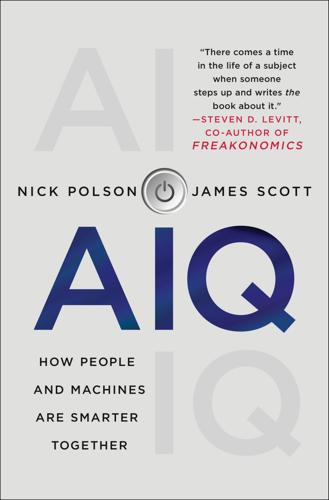
AIQ: How People and Machines Are Smarter Together
by
Nick Polson
and
James Scott
Published 14 May 2018
So tread carefully, or you’ll end up backing the manager with the silver tongue, rather than the golden edge. Postscript We first met Bayes’s rule as a principle for finding a lost submarine, and today Bayesian search is a small industry, with entire companies that consult on search-and-rescue operations.18 For example, you might recall the tragedy of Air France Flight 447, which crashed in the Atlantic Ocean on its way from Rio de Janeiro to Paris, in June of 2009. By late 2011, the search for the wreckage had been going on for two fruitless years. Then a Bayesian search firm was hired, a map of probabilities was drawn up, and the plane was found within one week of undersea search.19 Moreover, the main idea of Bayes’s rule—updating your prior knowledge in light of new evidence—applies everywhere, not least behind the wheel of a self-driving car.
…
See Great Andromeda Nebula anomaly detection averaging bias (type of anomaly) coin clipping and Formula 1 racing and fraud and importance of variability law enforcement and Moneyball NBA and overdispersion (type of anomaly) Patriots coin toss record and simulated coin toss record smart cities and square-root rule (de Moivre’s equation) and Trial of the Pyx (Royal Mint fraud protection) Apple data storage iPhone market dominance pattern-recognition system Aristophanes: The Frogs artificial intelligence (AI) algorithms and anxieties regarding assumptions and bias in, bias out contraception and criminal justice system and democratization of diffusion and dissemination of enabling technological trends image classification image recognition model rust models versus reality Moravec paradox policy rage to conclude bias robot cars salaries SLAM problem (simultaneous localization and mapping) speech recognition talent and workforce twenty questions game and See also anomaly detection; Bayes’s rule; health care and medicine; natural language processing (NLP); pattern recognition; personalization; prediction rules assumptions astronomy Alpha Centauri Bayes’s rule and Great Andromeda Nebula Leavitt’s original equation Leavitt’s prediction rule data measuring stars Milky Way nebulae oscillation of a pulsating star parallax pulsating stars statistics and Athey, Alex automation. See also robotics autonomous cars. See robot cars availability heuristic Baidu base-rate neglect Bayes’s rule coin flips and discovery of as an equation investing and mammograms and medical diagnostics and robot cars and search for Air France Flight 447 and search for USS Scorpion and usefulness of Bayesian search essential steps of posterior probabilities prior beliefs and revised beliefs prior beliefs and search for USS Scorpion prior probabilities Bel Geddes, Norman Belichick, Bill Bell Labs BellKor’s Pragmatic Chaos Berglund Scherwitzl, Elina Bernoulli, Johann big data.

The Disappearing Act
by
Florence de Changy
Published 24 Dec 2020
At first sight, yes, ‘necessarily’, assume all the experts questioned just after the aircraft’s disappearance. But not a single comment, explanation or technical insight will be forthcoming from the American plane maker Boeing or the British jet engine manufacturer Rolls-Royce, these two cornerstones of the global aircraft industry. When Air France Flight 447 went down between Rio de Janeiro and Paris in 2009, the last ACARS bulletin made it possible to locate the crash site, as the indications gave the crash time to within five minutes. So has a perfect hijacking, leaving no trace, just taken place? Or, more accurately, an almost perfect hijacking.
…
While Australia had up until then been intimating that nothing might ever be found on the ocean surface, another scientific institute, Australia’s very own CSIRO (Commonwealth Scientific and Industrial Research Organisation), published a study on 4 August 2015 proving that there was normally debris after a plane crash at sea, an apparent scoop if ever there was one. This study quoted four of the best-known cases of crashes at sea: SilkAir Flight 185 (19 December 1997),15 Adam Air Flight 574 (1 January 2007),16 Air France Flight 447 (1 June 2009)17 and Air Asia Flight 8501 (28 December 2014).18 However, the demonstration was not entirely convincing, as all the examples showed that such a large piece of debris as the flaperon had never been found as long after a crash or as far from the estimated point of impact with the sea.
…
It was only observed that the pilots had managed to aim for a river in the middle of the city, thus considerably limiting the human and material damage – which is true. By the time the details of the accident became known, the world’s attention had already turned to something else that had just happened. Air France Flight 447: a combination of parameters The BEA’s final report on the crash of Air France Flight 44712 highlighted a combination of technical and human failures – or rather a wrong human reaction to a technical failure. AF447 was an Air France A330 on an overnight flight from Rio de Janeiro to Charles de Gaulle Airport in Paris on 31 May–1 June 2009, with 228 passengers on board.
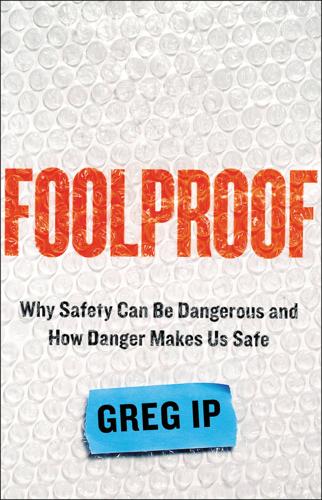
Foolproof: Why Safety Can Be Dangerous and How Danger Makes Us Safe
by
Greg Ip
Published 12 Oct 2015
The Deepwater Horizon had one of the best safety records in BP’s fleet of drilling rigs; indeed, some of the company’s executives were on it one night in April 2010 to learn more about that record. The rig’s safety record turned out to owe more to luck than to BP’s culture; that night, its luck ran out. It was destroyed by an explosion, killing eleven and triggering one of the worst oil spills in history. In 2009, Air France flight 447, with 228 passengers and crew aboard en route from Rio de Janeiro to Paris, passed through a region of intense thunderstorms, then abruptly disappeared. When investigators finally recovered the black boxes two years later, they learned that the copilot had tried to climb too sharply, causing the Airbus A330 to stall and rapidly lose altitude.
…
The data are from the Bureau of Transportation Statistics, U.S. Department of Transportation. 33 Fly-by-wire, as this became known: A great history of the technology is by William Langewiesche, Fly by Wire (New York: Picador, 2009). 34 Shortly after the autopilot: Details of the events leading up to the crash of Air France Flight 447 are from Bureau d’Enquêtes et d’Analyses pour la sécurité de l’aviation Civile, “Final Report on the accident on 1st June 2009 to the Airbus A330-203 registered F-GZCP operated by Air France flight AF 447 Rio de Janeiro–Paris,” 2012, 173. 35 pilots had never trained: Ibid., 204. 36 he may have ignored the stall warning: Ibid., 180.

Utopia Is Creepy: And Other Provocations
by
Nicholas Carr
Published 5 Sep 2016
And when let loose in the world, they face situations that their programmers didn’t prepare them for. They work perfectly until they don’t. Many disasters blamed on human error actually involve chains of events that are initiated or aggravated by technological failures. Consider the 2009 crash of Air France Flight 447 as it flew from Rio de Janeiro to Paris. While passing through a storm over the Atlantic, the plane’s airspeed sensors iced over. Without the velocity data, the autopilot couldn’t perform its calculations. It shut down, abruptly shifting control to the pilots. Taken by surprise in a stressful situation, the aviators made mistakes.
…
Abbas ibn Firnas, 329, 341 Abedin, Huma, 315 Abercrombie & Fitch, 244–45 accessibility, 99–100, 199–200, 268 instantaneous, 57, 232, 241, 264, 267 of music, 293 Adams, John, 325 Adderall, 304 Addiction by Design (Schüll), 218–19 Adorno, Theodor, 153–54 advertising, 15, 31, 168, 255, 258, 264 edginess in, 10–11 as pervasive, 64 search-linked, 279–80 in social media, 53–54 in virtual world, 27 see also marketing Advisory Council on the Right to Be Forgotten, 194 AdWords, 279 aesthetic emotions, 249–50 Against Intellectual Monopoly (Levine), 276 Agar, Nicholas, 339 Agarwal, Anant, 133 air disasters, 322–23 Air France Flight 447, 322 Akamai Technologies, 205 “Alastor” (Shelley), 88 Alfred P. Sloan Foundation, 272 algorithms, 113, 136, 145, 167, 174, 190–94, 237, 238, 242, 257, 258 allusion, cultural nuances of, 86–89 alphabet, ideograms vs., 234 Altamont concert, 42 AltaVista, 67 amateurs, 33 creativity of, 49 internet hegemony of, 4–8 media production by, 81 Amazon, 31, 37–38, 92, 142, 256, 277, 288 ambient overload, 90–92 America Online, 279–80 “Amorality of Web 2.0, The” (Carr), xxi–xii Amtrak derailment, 323 analog resources, 148–50 Anders, Günther, 321 Anderson, Chris, 68 Andreessen, Marc, xvii Andrews, James, 134 Android phones, 156, 283 anticonsumerism, 83–85 anxiety, 186, 304 Apple, 125 Apple Corps, 71 Apple II, 76–77 archiving, cultural memory and, 325–28 Arendt, Hannah, 310–11 Aristotle, 174, 307–9 art: allusion in, 89 bundling of musical tracks as, 42–43 by-number, 71–72 digitalization of, 223 emotional response to, 249–50 “free” vs.
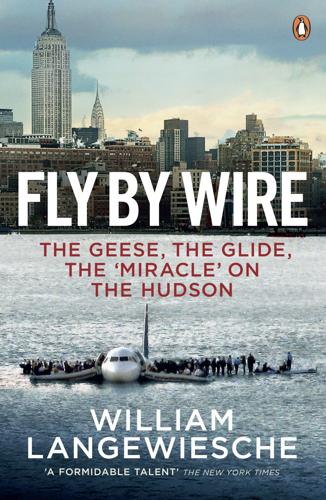
Fly by Wire: The Geese, the Glide, the Miracle on the Hudson
by
William Langewiesche
Published 10 Nov 2009
On October 7, 2008, for instance, an Australian A330 that was cruising in good weather suffered a computer failure, and reacted by pitching down so violently (at nearly −1 G) that twelve occupants were seriously injured. A computer failure should not have had that effect, but it did. The captain regained control after losing 650 feet, experienced another pitch-down five minutes later, regained control again, diverted to an airport, and made a safe emergency landing. More recent is the mysterious case of Air France Flight 447, which plummeted into the Atlantic on the night of June 1, 2009, when flying from Brazil to France. It was an Airbus A330 with 288 people aboard, all of whom died. Because it crashed into deep waters and its recorders have not been found, very little is known about what happened. There was no bomb.
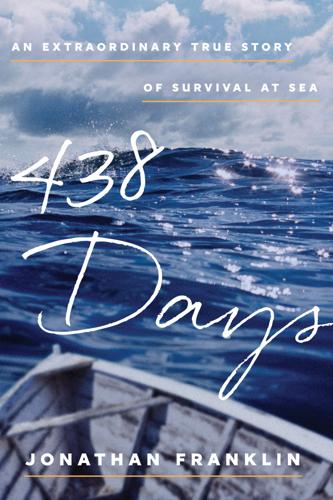
438 Days: An Extraordinary True Story of Survival at Sea
by
Jonathan Franklin
Published 17 Nov 2015
Long before these nascent storms are tracked by anxious governments in Southeast Asia, thirty-foot waves and 80 mph winds churn the open ocean. Alvarenga had ample time to study the anvil-shaped cloud formations that exploded on the horizon. Intracloud lightning illuminated the innards of these towers of clouds that rise so high commercial jets flying at 36,000 feet regularly alter their course to avoid contact. Air France flight 447, which crashed off the coast of Brazil in 2009, attempted to negotiate a bank of these clouds in the Atlantic Ocean and fatally underestimated the power of these equatorial storm cells. One sailor navigating the area described “dark gray menacing clouds coming toward us like something straight out of a horror movie.”

The Crash Detectives: Investigating the World's Most Mysterious Air Disasters
by
Christine Negroni
Published 26 Sep 2016
Ministry of Transportation, 153 Air Botswana, 201 Airbus A35, 185–86 Airbus A300, 8, 47 Airbus A320, 222, 236, 247 Airbus A321, 99, 130 Airbus A330, 55 Airbus A380, 136, 190, 211, 239–40, 243, 246–47, 253–55 Air Canada Flight 143, 223–26, 234–35, 240–43, 249–50, 255–56 Aircraft Communications Addressing and Reporting System (ACARS), 20, 41, 45–46, 55, 57 air data inertial reference unit (ADIRU), 235–36 Air France Flight 447, 53, 55–58 Air Line Pilots Association (ALPA), 110, 171, 176, 216 Air New Zealand Flight 901, x, 117–31 Antarctic Experience flights, 118, 125, 128–29 Air Registration Board, United Kingdom, 150, 154 air traffic control (ATC) and accident investigation process, 82 and Air New Zealand Flight 901 crash, 120, 127 and Albertina crash, 89 and ANA Flight 692, 168 and Arrow Air crash, 108 and cockpit resource management, 220 and Comet crashes, 155 communications with hypoxic crew, 11, 13, 32–33 and complexity of air safety system, 260 and flight simulations, 252 and Helios Flight 522, 41 and human factors, 198–99, 201 and MH-370, 20–22, 62 and Northwest Flight 188, 227 and Qantas engine loss incident, 247 and radio navigation, 51 and Tenerife runway collision, 214–16 and United Flight 553, 84–85 Airline Training Center Arizona (ATCA), 198 Aizawa, Takeo, 193 Albertina (DC-6), 87, 89, 92–96 All Nippon Airways (ANA), 166–69, 181–82, 187, 192 Allen, A.

Driverless: Intelligent Cars and the Road Ahead
by
Hod Lipson
and
Melba Kurman
Published 22 Sep 2016
If neither party dives in to the rescue, the result is mission failure. If humans and machines are given split responsibility for driving, the results could be disastrous. Even as he champions machine and human partnerships, Mindell himself describes a harrowing example of split responsibility between man and machine in the plight of air France Flight 447, which, in 2009, plunged into the Atlantic Ocean, tragically killing all 228 people on board. Later analysis of the plane’s black box revealed that the cause of the crash was not terrorism or a mechanical malfunction. What went wrong was the handoff from automated flight mode to the team of human pilots.

Antifragile: Things That Gain From Disorder
by
Nassim Nicholas Taleb
Published 27 Nov 2012
(Note that the errors of naive stress testing and reliance on risk models were quite obvious at the time; as with the economic crisis, nobody wanted to listen.) Every plane crash brings us closer to safety, improves the system, and makes the next flight safer—those who perish contribute to the overall safety of others. Swiss flight 111, TWA flight 800, and Air France flight 447 allowed the improvement of the system. But these systems learn because they are antifragile and set up to exploit small errors; the same cannot be said of economic crashes, since the economic system is not antifragile the way it is presently built. Why? There are hundreds of thousands of plane flights every year, and a crash in one plane does not involve others, so errors remain confined and highly epistemic—whereas globalized economic systems operate as one: errors spread and compound.

Site Reliability Engineering: How Google Runs Production Systems
by
Betsy Beyer
,
Chris Jones
,
Jennifer Petoff
and
Niall Richard Murphy
Published 15 Apr 2016
However, note that our description contains some nuances that might be useful to keep in mind while reading the rest of the chapter. 2 The expertise acquired in building such automation is also valuable in itself; engineers both deeply understand the existing processes they have automated and can later automate novel processes more quickly. 3 See the following XKCD cartoon: http://xkcd.com/1205/. 4 See, for example, http://blog.engineyard.com/2014/pets-vs-cattle. 5 Of course, not every system that needs to be managed actually provides callable APIs for management—forcing some tooling to use, e.g., CLI invocations or automated website clicks. 6 We have compressed and simplified this history to aid understanding. 7 As in a small, unchanging number. 8 See, e.g., https://en.wikipedia.org/wiki/Air_France_Flight_447. 9 See, e.g., [Bai83] and [Sar97]. 10 This is yet another good reason for regular practice drills; see “Disaster Role Playing”. Chapter 8. Release Engineering Written by Dinah McNutt Edited by Betsy Beyer and Tim Harvey Release engineering is a relatively new and fast-growing discipline of software engineering that can be concisely described as building and delivering software [McN14a].